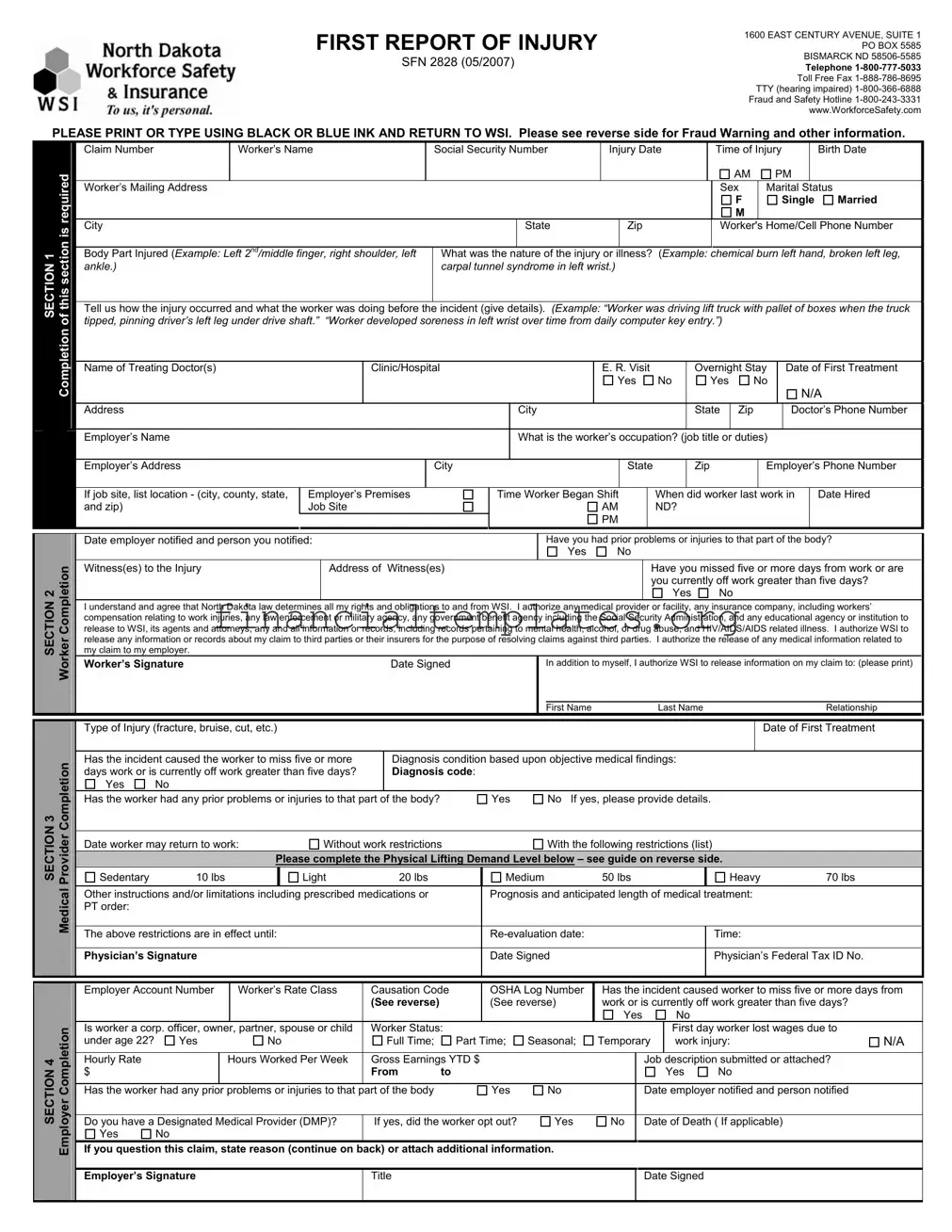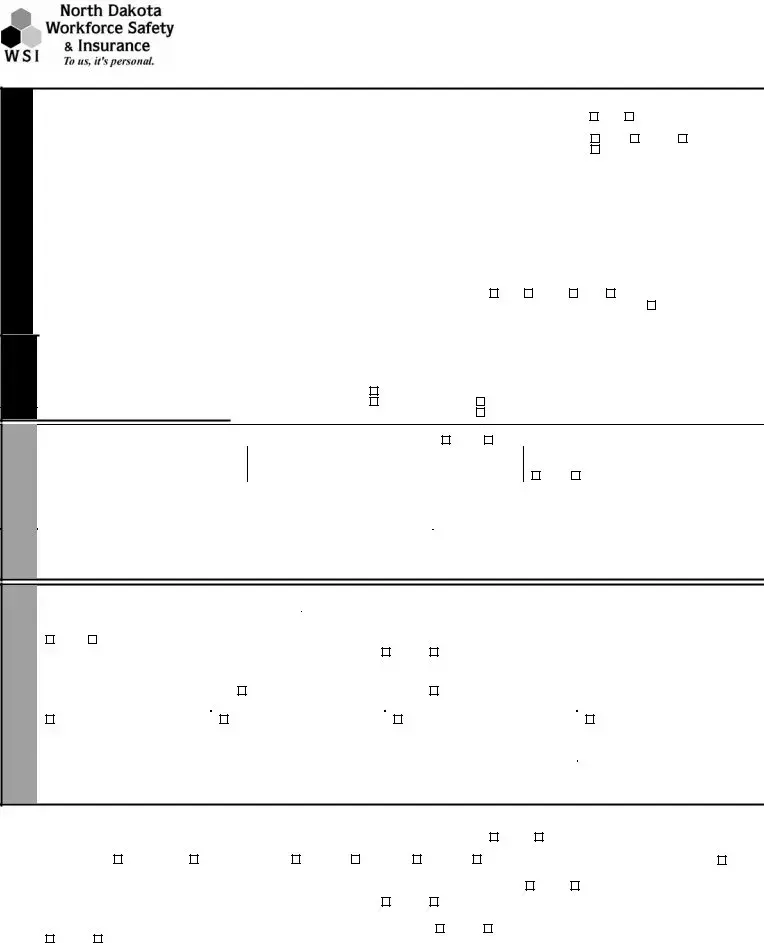The Workers' Compensation Claim Form shares several similarities with the First Report of Injury form, primarily serving as the initial document to report a workplace injury or illness. Like the First Report of Injury, it collects detailed information about the incident, including the injured worker's personal information, the circumstances leading to the injury, and the immediate medical response. Both forms are crucial for initiating the claims process and ensuring that the worker receives appropriate medical attention and compensation benefits in a timely manner.
The Occupational Safety and Health Administration (OSHA) 300 Log is another document that mirrors the First Report of Injury in terms of content. This form requires detailed recording of work-related injuries and illnesses, focusing on the specifics of each incident to help improve workplace safety and health standards. Unlike the First Report of Injury, which is used to file a claim, the OSHA 300 Log's purpose is to track injury trends over time, aiding in the identification and mitigation of workplace hazards.
Disability Insurance Claim Forms also bear resemblance to the First Report of Injury form. These documents are used when an employee is unable to work due to a disability and needs to claim benefits. Similar information is gathered about the nature of the injury or illness, treatment received, and expected duration of the disability. However, these forms are specifically for insurance claims outside of the workers' compensation system, focusing on income replacement for disabilities not necessarily caused by workplace incidents.
The Medical Release Form, while not a report of injury per se, complements the First Report of Injury form by authorizing the release and exchange of medical information between healthcare providers and insurance carriers. This form ensures that relevant medical records can be accessed to authenticate the injury details provided in the First Report of Injury, facilitating the claims process and ensuring that decisions are based on accurate medical data.
Incident Report Forms, used by businesses to document any unusual or unexpected occurrences that are not necessarily related to injuries, can also be likened to the First Report of Injury form. These documents capture the specifics of an incident, including date, time, and description, to assist in future investigations or to implement preventive measures. Though broader in scope, they serve a similar purpose in record-keeping and potential legal protection for the organization.
Return to Work Forms partially overlap with the First Report of Injury form in their use within the context of an injury or illness. These forms focus on the worker's readiness to resume work, outlining any temporary or permanent work restrictions based on medical advice. This is a step that comes later in the process, following an initial report of injury, but is crucial for managing the worker's safe and effective reintegration into the workplace.
Finally, the Auto Accident Personal Injury Claim Form shares similarities with the First Report of Injury form in the context of documenting injuries. Although one pertains to workplace injuries and the other to vehicular accidents, both require detailed accounts of how the injuries occurred, the nature and extent of those injuries, and the initial medical response. These forms are critical in the claims process for insurance purposes, ensuring that all relevant details are captured accurately for record-keeping and dispute resolution.

